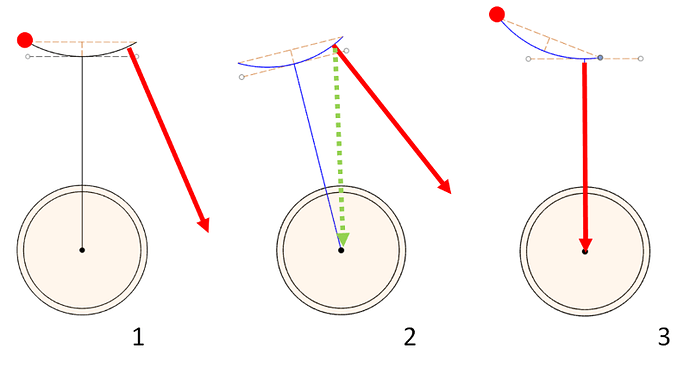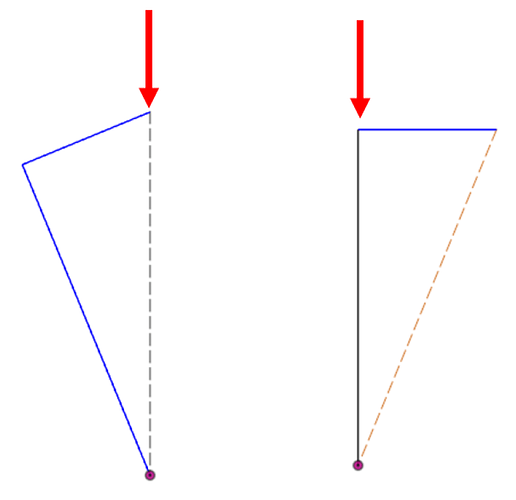Sorry to resurrect this old thread, but since seats are… well, just seats, I suppose the topic is timeless.
I was just thinking about this too. I arrived at a similar theory.
Firstly, if 1) the saddle was a constant width throughout, and 2) its curvature was a perfect arc, then all tilt settings would feel identical to the rider, and therefore there would be no need to adjust tilt as long as the seat was sufficiently long front and back. Some riders may want their seat longer at the back and some longer at the front, so manufacturers would have to make seats that are long both ways to satisfy everyone’s needs. This would make the seat heavier, so seat that can be moved back and forth pleases everyone whilst keeping weight down (as well as materials and therefore cost).
For argument’s sake we’ll assume saddles are arc-shaped, now let’s add in two constraints:
-
The equilibrium position requires that the rider’s centre of mass (from the sit bone up) lies vertically above the wheel axle.
-
Saddle width is not constant, and riders will subconsciously position themselves so as to maximise comfort, which usually means sit bones on the widest spot of the saddle. Call that the sitting spot. Furthermore, the sitting plane must be horizontal (i.e. parallel to the ground) so that the rider doesn’t slip forwards or backwards on the saddle.
The first constraint is a fact, and the second one a requirement. Now can this requirement be satisfied for any given angle of the frame with respect to the vertical? Short answer is no:
Figure 1: Saddle in neutral (horizontal position), the red arrow is perpendicular to the saddle at the sitting spot.
Figure 2: In order to achieve equilibrium, rider tilts frame forward. Now the sitting spot is directly above the wheel axle (green dotted arrow) but the sitting spot plane is not parallel to the ground plane; instead it’s aggressively tilted forwards like a slide—bad.
Figure 3: Seat angle is adjusted until sitting spot coincides with the top of seat tube, and the red and green dotted arrows are co-linear, thus ensuring all constraints and requirements are satisfied (equilibrium and comfort).
Another side effect of seat angle adjustments is that the position of the handle (and brake lever if one is present) are affected as denoted by the fat red dot.
Even if the seat was a perfect arc of constant width, from a mechanical perspective the optimal configuration is one where the rider’s weight lies directly above the top of the seatpost, as this ensures only axial compression forces are exerted on the seatpost. An off-axis load will exert both compression and torque, the latter usually being mechanically more taxing and an important consideration if the seatpost crown (don’t know the correct name for this) is welded. In the following diagram representing a frame+saddle, the right configuration would be stronger:
Riders tend to compensate for inadequate saddle configurations by hunching forward. This achieves the equilibrium and comfort at the sit bones, but negatively affects comfort elsewhere e.g. the lower back. A bit like an ergonomic chair vs a cheap crappy chair: both get the job done but the former does the job better.


